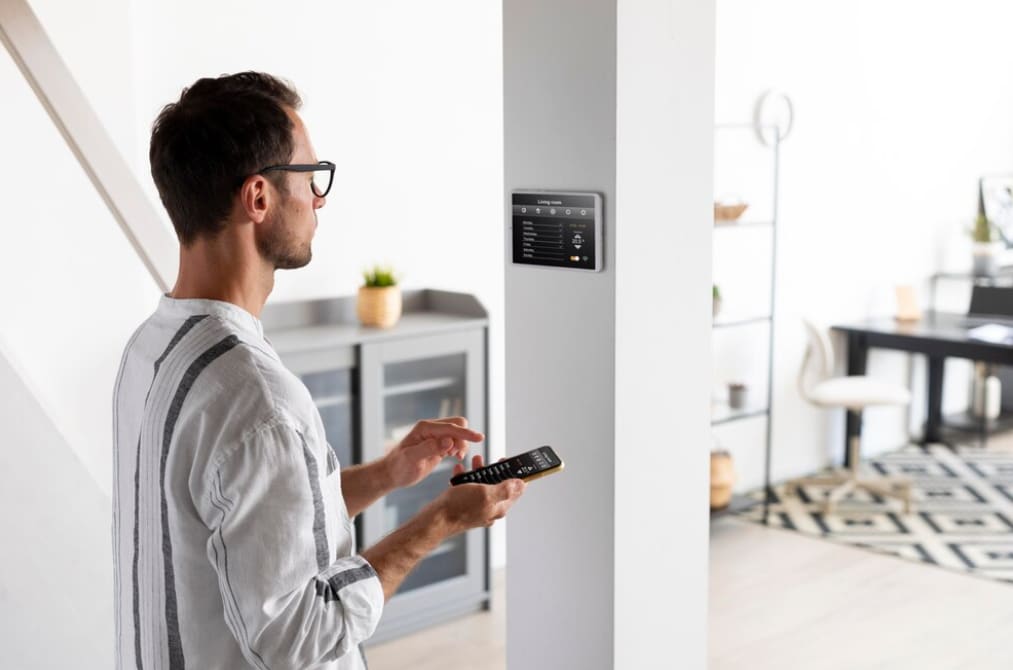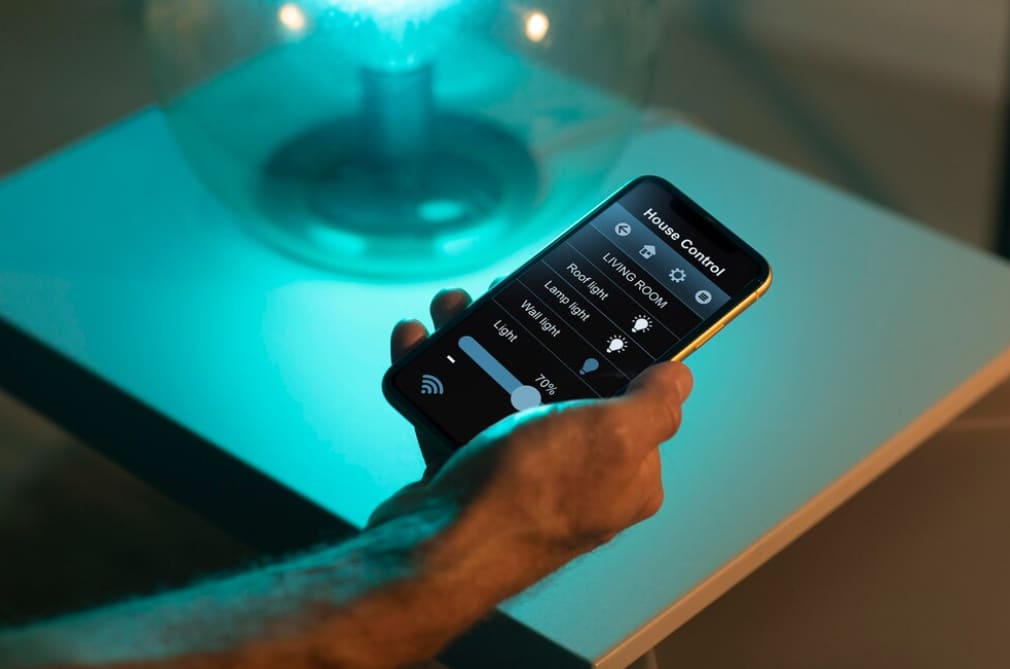Have you ever considered enhancing the sophistication of your smart living setup? The synergy of ESPHome and Home Assistant could unlock new levels of intelligence and connectivity. ESPHome serves as a portal for creating and managing custom devices, while Home Assistant provides a powerful, open-source platform for automation. Together, they create a more seamless, interconnected, and user-friendly environment. Dive into the world of smart living by exploring how the integration of Home Assistant and ESPHome can enhance your home automation, and complement it with our insightful article on the best Stringify flows for a seamless experience.
This guide will show you how to link your ESPHome devices with Home Assistant, use it for efficient device management, and offer solutions for typical integration hurdles. It’s an essential tool for both beginners in automation and those looking to upgrade their current systems. Filled with critical insights, this resource is your key to developing a cohesive and sophisticated living ecosystem.
What is ESPHome and Home Assistant
ESPHome and Home Assistant are pivotal components in the world of smart living configurations. Developing a thorough grasp of their capabilities can significantly enhance your setup and minimize any difficulties.
What Exactly is ESPHome?
ESPHome stands as a tool specifically crafted for the effective management and automation of ESP8266 and ESP32 boards. These compact, budget-friendly microcomputers establish wireless internet connections, making them ideal for integration into a variety of household devices, such as lighting systems. This allows for the remote management of a smart living space.
It operates essentially as a translator for your ESP boards. You provide ESPHome with specific instructions for each board, and it converts these instructions into a format the boards understand. Once these directives are programmed into the boards, they commence the execution of your tailored tasks.
The Role of Home Assistant in Smart Home Automation:
While ESPHome enables direct interaction with your ESP boards, an intermediary is necessary to convey your instructions to ESPHome. Enter Home Assistant: a comprehensive, open-source home automation platform. It centralizes the control of all your smart living devices into a single, cohesive interface, eliminating the need for multiple apps for different smart devices. It essentially acts as a master control for your smart living space.
Home Assistant’s role in smart living automation is multifaceted. Being open-source, it benefits from the global community of developers who continually contribute to and expand its smart capabilities. Almost any envisioned smart home feature is likely to be available as an add-on in Home Assistant.
Security is also a key aspect. Your personal data is stored locally, not on external cloud services, ensuring privacy and freedom from trackers and ads. It’s also user-friendly, welcoming even to those less familiar with technology.
Ultimately, it serves as a control hub for your ESPHome-integrated devices, enabling seamless management and automation of various functions within your smart living space.
The Benefits of Combining ESPHome with Home Assistant

The integration of ESPHome with Home Assistant brings a myriad of advantages that profoundly elevate the quality and convenience of your home automation system. This combination not only simplifies device management but also streamlines the automation process and ensures high compatibility with a wide range of devices. Let’s delve into how this integration can transform your approach to home automation.
Effortless Device Management
The collaboration creates an unprecedented ease in controlling automation devices. It serves as a user-friendly interface, allowing you to oversee a variety of devices such as smart light bulbs and thermostats with remarkable ease. When integrated with Home Assistant, it presents a centralized control panel, putting the management of all your devices at your fingertips in one unified location. This integration ensures that managing your smart home devices is efficient and hassle-free.
Streamlining the Home Automation Process
Arguably, one of the most significant advantages of integrating ESPHome with Home Assistant is the simplicity it introduces to the home automation process. This integration eliminates the need for intricate coding, enabling you to set up automation rules like timing your coffee maker or scheduling the lights to turn off with just a few clicks. This user-friendly approach allows for a more intuitive and less complicated way to automate your home, making it accessible to everyone, regardless of their technical expertise.
Enhanced Compatibility with Smart Devices
ESPHome is renowned for its versatility and its ability to work seamlessly with a broad spectrum of smart devices. When paired with Home Assistant, this flexibility is further enhanced. This powerful combination ensures an impressive level of support and connectivity with both current and future smart devices. With this integration, concerns about compatibility become a thing of the past, allowing you to fully utilize the capabilities of your smart home setup. This expanded compatibility ensures that you can maximize the potential of your smart home without the usual limitations or compatibility challenges.
ESPHome and Home Assistant Integration
In this section, we will explore the seamless integration of your ESPHome devices with Home Assistant. The step-by-step instructions provided here aim to simplify the process for you. Bring your devices and your enthusiasm, and let’s dive right in!
Begin with the Installation of Home Assistant
Before we proceed, it’s essential to ensure that Home Assistant is correctly installed on your device. It stands as a robust open-source home automation platform, prioritizing privacy and local control. If you’re unsure about the installation process, don’t fret—here’s a streamlined guide:
- Visit the official Home Assistant website and obtain the Home Assistant Operating System.
- Once downloaded, flash this software onto your chosen device, whether it’s a Raspberry Pi or another compatible option.
- Upon completing the installation, you can start up your device, and Home Assistant will initiate automatically.
Should you encounter any challenges during the installation, a wealth of online resources is available to offer assistance.
Proceed to Configure Your ESPHome Devices
After successfully installing Home Assistant, the subsequent step involves configuring your ESPHome devices. It provides a streamlined system to manage your ESP8266/ESP32 modules through straightforward yet potent configuration files, enabling remote control via Home Automation systems.
For an in-depth guide on configuring devices within Home Assistant using the ESPHome add-on—an approach we find to be the most straightforward way to begin with ESPHome—refer to our comprehensive walk-through: “How to Build a Home Automation Device with ESPHome and Home Assistant?
Resolving Integration Challenges
Integrating ESPHome with Home Assistant for a smarter home setup does not always proceed smoothly.
Handling ESPHome Device Connection Failures to Home Assistant
Are ESPHome devices appearing as “unavailable” in Home Assistant? It’s a common issue, but no need for alarm. Here are effective steps to address this:
| Strategy | Purpose |
|---|---|
| Wi-Fi and Router Configuration Check | Ensure the ESP device is within Wi-Fi range and the router settings are not obstructing the device. |
| Utilizing the ESPHome Dashboard | The dashboard provides real-time information about device connectivity, which can reveal network connection issues. |
| Analyzing Home Assistant Error Logs | The logs can offer insights into potential causes of connection problems. |
Troubleshooting involves methodically examining each element until the root cause is uncovered.
Solving the “Configuration Not Found” Error in Home Assistant
Encountering a “Configuration Not Found” error? Here’s how to troubleshoot:
- Verify configuration.yaml file paths: Incorrect or misplaced paths in this file are common culprits for this error;
- Search for Syntax Errors: Even minor errors like a misplaced semicolon or incorrect indentation in YAML files can cause issues. Review the file carefully or use an online YAML validator.
Persistence and meticulous investigation are key in resolving these challenges, ensuring a smooth ESPHome and Home Assistant integration.
Enhancing Your ESPHome and Home Assistant Experience
For those immersed in the smart home journey, ESPHome and Home Assistant are familiar tools that convert homes into integrated, intelligent environments. However, it’s worth asking if one is truly maximizing their system’s potential.
Key Strategies for Seamless Integration
To maximize the benefits of integrating ESPHome with Home Assistant for an enriched smart home experience, consider the following strategies:
- Regular Updates: Stay current with updates for both ESPHome and Home Assistant. Regular updates provide access to the latest features and critical bug fixes, enhancing the integration process;
- Distinct Entity IDs: Ensure each entity in Home Assistant has a unique Entity ID. This practice prevents confusion and errors in device communication;
- Effective Grouping: Organize devices into relevant groups within Home Assistant. For instance, all devices in the living room can be grouped, simplifying management;
- Intelligent Use of Automations: Identify and automate repetitive tasks in your smart home setup. Thoughtful automation saves time and enhances efficiency.
Remember, achieving efficient integration is an iterative process, requiring personalized adjustments to meet unique needs.
Advanced Configuration in ESPHome and Home Assistant for Experienced Users
For those adept in smart home setups and looking to extract maximum functionality from their ESPHome and Home Assistant systems, this segment offers advanced configuration tips to enhance your experience:
- Modifying ESPHome Log Levels: By default, it operates at the DEBUG log level. Altering this setting to VERBOSE provides a more detailed view, aiding in more effective problem-solving;
- Integrating Custom Component Repositories: It supports the addition of custom component repositories. This feature enables the integration of third-party components, thereby expanding the system’s capabilities;
- Implementing MQTT Broker: Utilizing an MQTT broker enhances device management, offering improved reliability and finer control over your smart home devices;
- Utilizing Node-Red for Automations: Node-Red provides a graphical approach to crafting complex automations in Home Assistant, opening up a realm of possibilities for system customization.
Note that leveraging these advanced options requires coding proficiency and a comprehensive understanding of the ESPHome and Home Assistant ecosystem. Although challenging, these techniques are key to unlocking the full potential of your smart home configuration.
ESPHome and Home Assistant at Work

In today’s tech-driven world, home automation is not just a convenience; it’s a transformative experience. Think of managing all your home devices with just a tap on your smartphone. This is the magic of ESPHome and Home Assistant integration. This segment highlights real-world examples, showcasing how you can revamp your living space into a smart home.
Innovative Home Automation Ideas with ESPHome and Home Assistant
The concept of perfect home automation is no longer a distant dream but a tangible reality. By integrating ESPHome with Home Assistant, your ordinary home can evolve into a smart living space. Picture smart lighting that adjusts to your mood, self-drawing curtains, and more. The possibilities are limitless. Here are some imaginative and unique applications of these technologies:
- Automated Home Facade: Envision a home that mirrors your daily rhythms – lights, blinds, and temperature settings adjusting automatically to your schedule;
- Enhanced Baby Monitor Safety: Utilize ESPHome and Home Assistant to improve your baby monitors, monitoring humidity and temperature in the nursery for added peace of mind.
The more creative you get with these technologies, the more innovative your home automation solutions will become.
Inspiring Success Stories and Valuable Lessons
Many have already embarked on this journey, using ESPHome and Home Assistant to transform their homes. Here are some inspiring examples:
| Project | Description |
|---|---|
| The Smart Greenhouse | A user automated their greenhouse, controlling irrigation, humidity, and temperature, thus saving time, water, and enhancing plant growth. |
| The Tech-Savvy Senior | A senior with mobility issues automated her entire home, simplifying her daily routine. |
Learning from others’ experiences is crucial. Here are some key takeaways:
- Compatibility Checks: Ensure that your devices are compatible with ESPHome and Home Assistant before investing;
- Pilot Testing: Start with a small number of devices to identify and resolve any issues early on.
Conclusion
Armed with these innovative ideas, inspiring stories, and learned lessons, you’re all set to begin your journey into home automation. Embrace the change and enjoy the transformation of your home into a smart, efficient space. Good luck!
